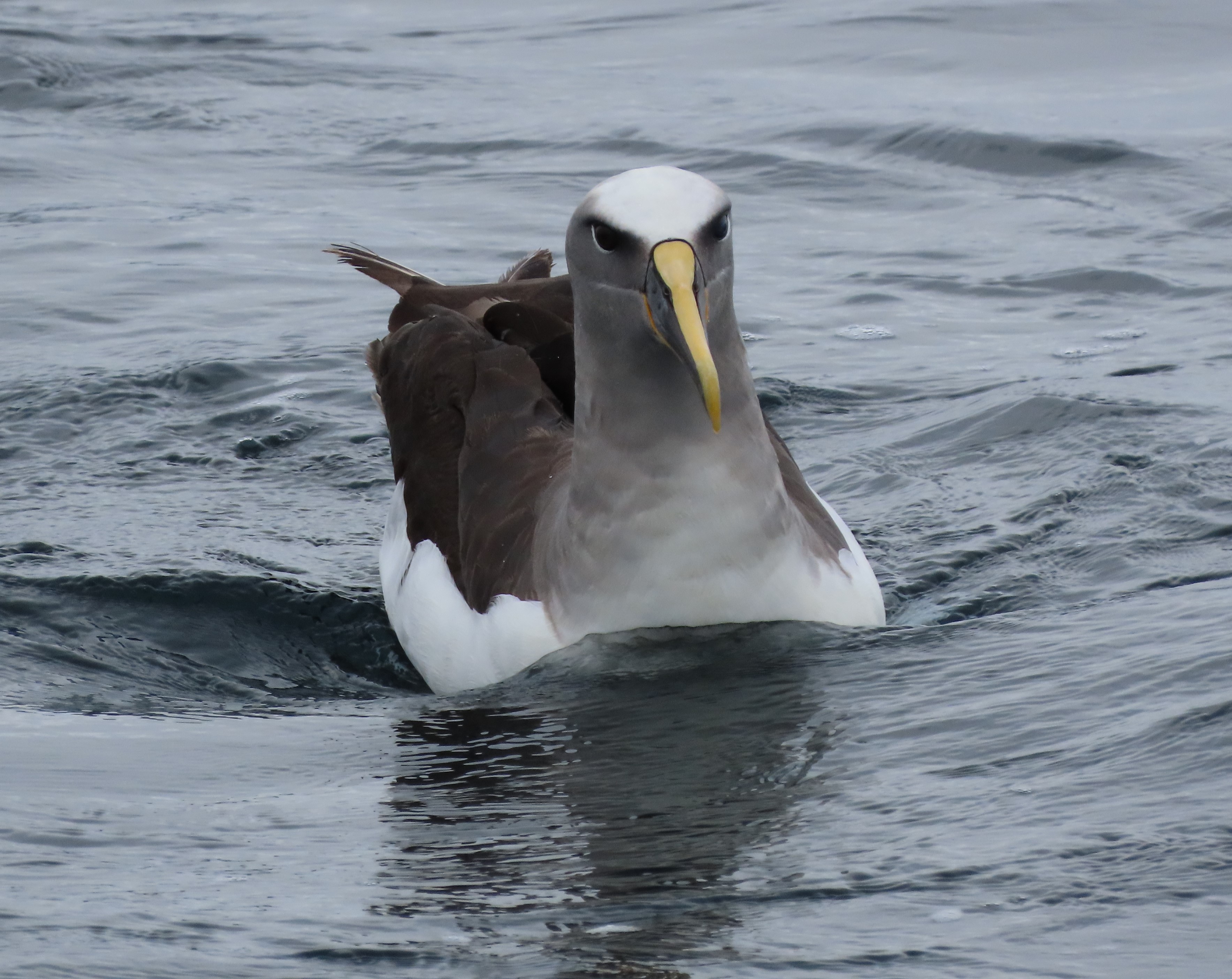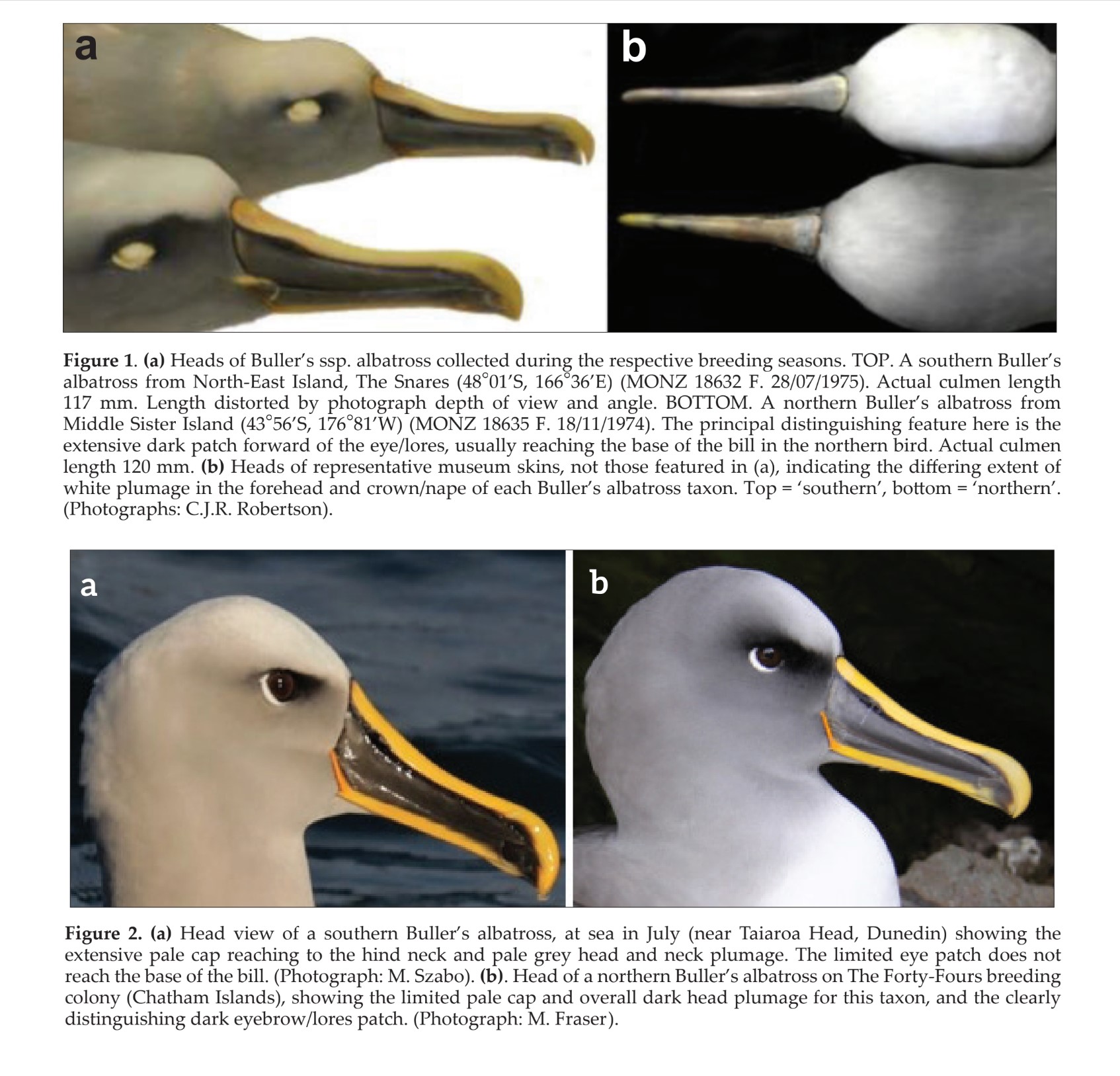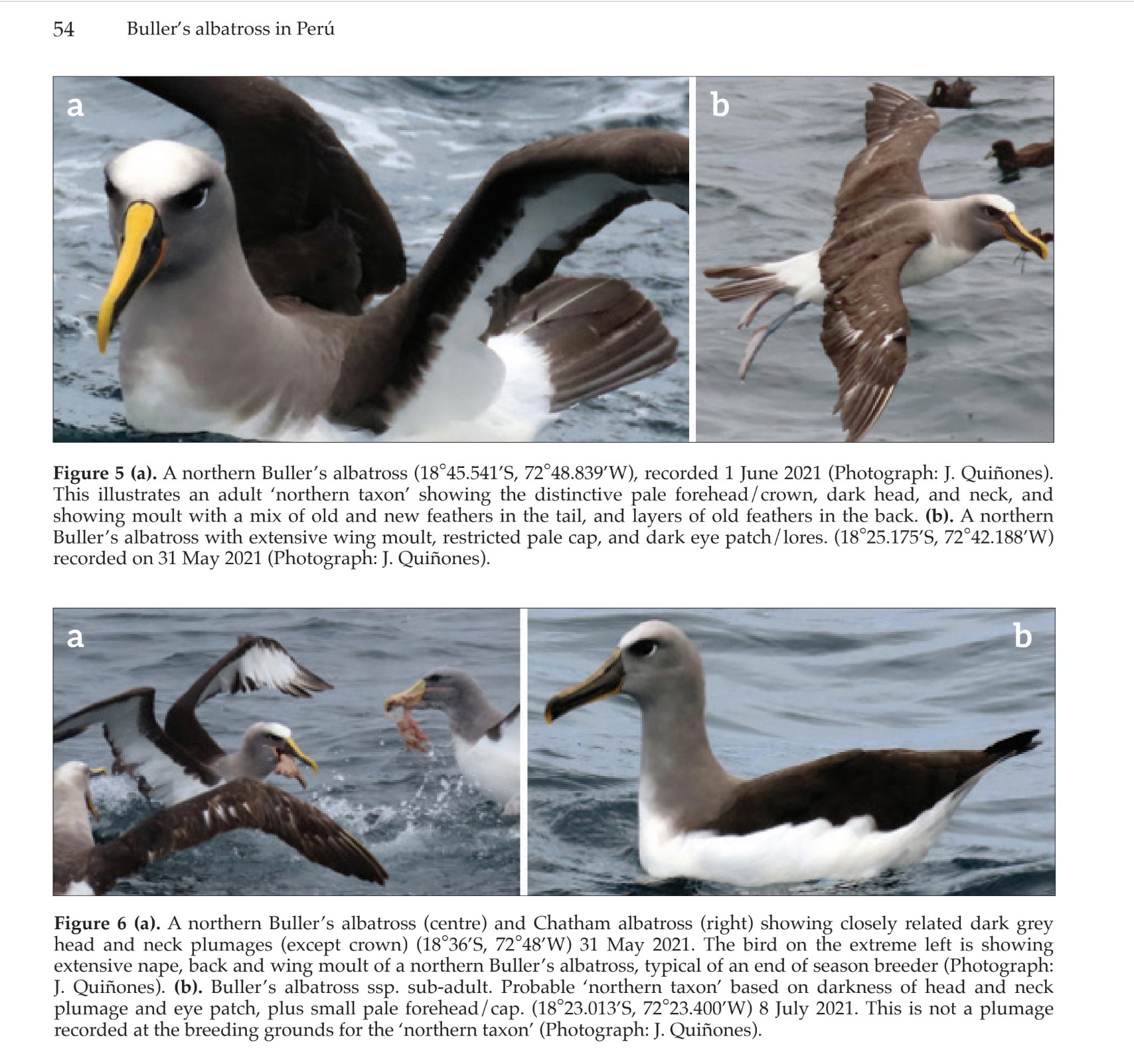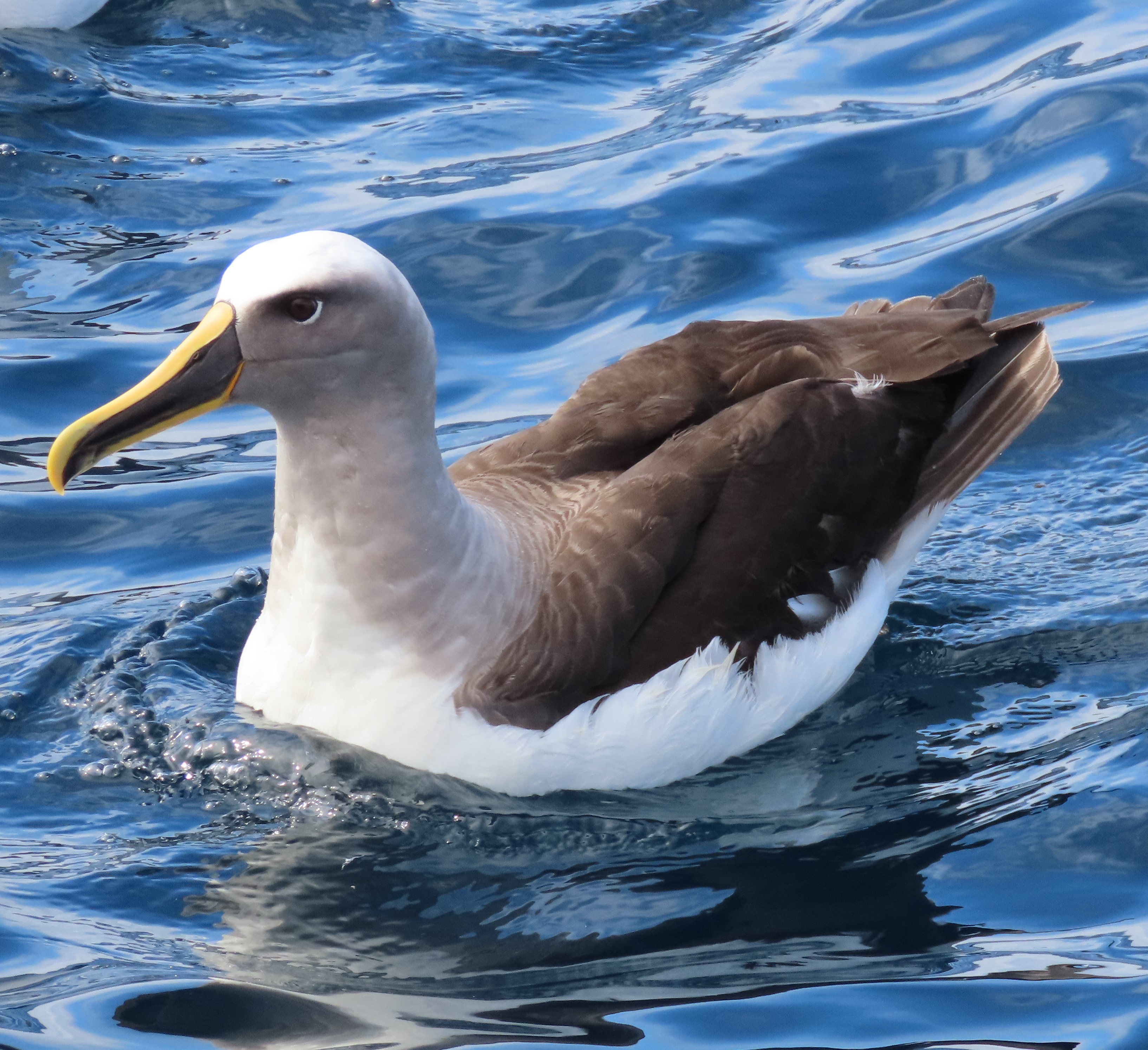
A Northern Buller’s Albatross off Peru, photograph by Javier Quiñones
Javier Quiñones (Instituto del Mar del Peru) and colleagues have published in the journal Notornis on the occurrence of both subspecies of the Near Threatened Buller’s Albatross Thalassarche bulleri off southern Peru.
The paper’s abstract follows:
“The current Buller’s albatross taxa (Thalassarche bulleri bulleri [southern] and T. b. platei [northern]) engage in transpacific migrations from breeding sites on New Zealand offshore islands to non-breeding areas in the south-eastern Pacific Ocean. Both taxa are identifiable from a combination of plumage colour features in the head and bill that are easy to detect at short distance (<15 m). There is also breeding allopatry between the taxa, with the onset of breeding 2.5 months earlier in the ‘northern taxon’. In this study, close-range sightings and captures of lured Buller ́s albatross individuals off southern Perú were carried out during two pelagic trips in May–July 2021 onboard a small- scale longline fishery wooden boat (12 m long), during their normal operations when targeting sharks. We report on the presence of 41 Buller ́s albatross, of which 40 were recognized as ‘northern taxon’ and one as ‘southern taxon’. The great majority of the ‘northern taxon’ were adults (92.5%), with the remaining identified as sub-adults (7.5%). Birds were sighted between 126 and 223 km offshore west-south-west from the port of Ilo, Perú (17°38.64 ́S, 71°20.77 ́W). Birds sighted were preferentially in oceanic areas above the abyssal plain (68% of sightings), with a mean depth of 4,537 m, demonstrating that the ‘northern taxon’ is a truly oceanic species. No birds were observed by us over the continental shelf. Discrimination of ‘northern taxon’ from ‘southern taxon’ is possible from a combination of the plumage colour features in the head and bill. However, identification and comparison of photographs for both taxa taken at sea can be problematic, due to varying light conditions, unless the birds can be drawn close to the photographer using attractants, such as offal discards.”


From the publication: differences between Northern and Southern Buller’s Albatrosses
His publication reported here is an outcome of his ACAP Small Grants project in 2021 entitled “Integrating an onboard observer program and remote tracking data to evaluate the interactions between the small-scale longline fisheries and adult Chatham albatrosses in their wintering grounds off Peru.”
Read about Javier’s -funded secondment in 2022 with New Zealand’s Department of Conservation that included addressing distribution data gaps of Buller’s Albatrosses and other ACAP-listed species and their overlap with the artisanal fishing effort of Peruvian longline, drift gillnet and coastal gillnet fisheries here. Access Javier’s publication on albatrosses and other seabirds in Peruvian waters from here.

A Northern Buller’s Albatross off Peru, photograph by Javier Quiñones
With thanks to Javier Quiñones.
Reference:
Quiñones, J., Zavalaga, C. & Robertson, C.J.R. 2023. Identifying northern Buller ́s albatross (Thalassarche bulleri subsp.) in offshore waters of southern Perú. Notornis 70: 49-59.
18 July 2023

 Français
Français  English
English  Español
Español